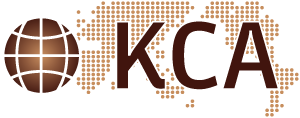Research Article
Abstract
References
Information
The prolonged COVID-19 pandemic has changed many things in our society, and in particular, social distancing, a policy intervention to prevent the spread of infectious disease, has led to a change in mobility of members of society. The purpose of this paper is to investigate the differential effect of COVID-19 on mobility from a spatial perspective. For this, this study applied spatial statistics to the change rate of monthly public transportation transit of Seoul city in 2020 compared to 2019. The main findings are as follows. First, through exploratory spatial data analysis and cluster analysis, it was confirmed that mobility has significantly decreased in the center of Seoul, since 2020 January and February when the impact of COVID-19 was weak, and that the positive spatial autocorrelation of mobility changes gradually increased. Second, specific age, job, and income variables that are continuously related to and influencing mobility change were identified through correlation and spatial regression analyses. The finding that policy intervention to prevent the spread of COVID-19 has differentially affected mobility will serve as a starting point for establishing policies to alleviate inequality in the post-coronavirus era.
COVID-19 팬데믹의 장기화는 우리 사회의 많은 것을 변화시켰으며, 특히 감염병 확산 방지를 위한 정책적 개입인 사회적 거리두기는 사회 구성원의 모빌리티 변화를 가져왔다. 본 연구의 목적은 공간적 관점에서 모빌리티에 대한 COVID-19의 차별적 영향을 규명하는 것이다. 이를 위해 서울특별시를 사례로 하여 2019년 대비 2020년의 월별 대중교통 승차 모빌리티 변동률에 대해 공간통계기법을 적용하였고, 다음과 같은 결과를 얻었다. 첫째, 탐색적 공간 데이터 분석 및 군집 분석을 통해 서울에서 COVID-19의 영향이 적었던 2020년 1~2월 이후 서울 중심부에서 모빌리티가 크게 감소하였으며, 점차 모빌리티 변화의 정적인 공간적 자기상관이 증가한 것을 확인하였다. 둘째, 상관분석 및 공간회귀분석을 통하여 모빌리티 변화와 지속적으로 연관되고 영향을 주는 특정 연령, 직업, 소득 변수들을 확인하였다. COVID-19의 확산을 막기 위한 정책적 개입이 모빌리티에 차별적으로 영향을 주었다는 사실은 포스트 코로나 시대에 불평등 완화를 위한 정책 수립의 출발점이 될 것이다.
- 강전영・박진우, 2021, "코로나-19 상설선별진료소 및 임시선별검사소의 공간적 접근성 분석-서울시를 사례로," 대한지리학회지, 56(2), 231-244. 10.22776/kgs.2021.56.2.231
- 김진희, 2020, "코로나 19 유행의 건강형평성, 건강도시에서의 함의," 보건교육건강증진학회지, 37(4), 81-89. 10.14367/kjhep.2020.37.4.81
- 김태완・이주미, 2020, "코로나 시대의 소득불균형 심화와 정책적 대응," 보건복지포럼, 2020(12), 20-33.
- 남재현・이래혁, 2020, "코로나19의 영향은 모두에게 동등한가?-종사상 지위별소득과 빈곤에 미친 영향을 중심으로," 한국사회복지학, 72(4), 215-241. 10.20970/kasw.2020.72.4.008
- 박미희, 2020, "코로나19 시대의 교육격차 실태와 교육의 과제: 경기 지역을 중심으로," 교육사회학연구, 30, 113-145. 10.32465/ksocio.2020.30.4.005
- 박비곤, 2021, "코로나19 시기 가계소득 불평등 변화," 고용동향브리프, 2021(8), 2-19.
- 서문기, 2020, "한국 계층갈등의 지형과 공감사회: 코로나 시대의 극복방안," 한국경제지리학회지, 23(3), 197-208. 10.23841/egsk.2020.23.3.197
- 서울대학교 보건대학원, 2020, 「코로나19 7차 국민인식조사」.
- 손병돈・문혜진, 2021, "코로나19로 인한 경제적 어려움은 누구에게 집중되었는가?," 한국사회복지학, 73(3), 9-31. 10.20970/kasw.2021.73.3.001
- 송상윤, 2021, "코로나19가 가구소득 불평등에 미친 영향," BOK이슈노트, 2021(9), 1-17.
- 이건학・김감영, 2016, "공간통계 기법을 이용한 현주인구 추정 모델링," 한국지도학회지, 16(2), 71-93. http://dx.doi.org/10.16879/jkca.2016.16.2.071 10.16879/jkca.2016.16.2.071
- 이승호・홍민기, 2021, "코로나19와 1차 긴급재난지원금이 가구 소득과 지출에 미친 영향," 한국사회정책, 28(3), 17-44. 10.17000/kspr.28.3.202109.17
- 이채현・하은혜・김감영, 2021, "COVID-19 팬데믹의 지도화 동향에 대한 비판적 검토," 한국지도학회지, 21(2), 13-28. 10.16879/jkca.2021.21.2.013
- 이희연・노승철, 2013, 「고급통계분석론: 이론과 실습(제2판)」, 고양: 문우사.
- 이희연・주유형, 2012, "사망률에 영향을 미치는 환경 요인분석-수도권을 대상으로," 한국도시지리학회지, 15(2), 23-37.
- 조한승, 2021, "코로나 백신 불평등과 글로벌 보건 거버넌스의 과제," 생명, 윤리와 정책, 5(2), 1-28.
- Abedi, V., Olulana, O., Avula, V., Chaudhary, D., Khan, A., Shahjouei, S., Li. J., and Zand, R., 2021, Racial, economic, and health inequality and COVID-19 infection in the United States,
Journal of Racial and Ethnic Health Disparities , 8(3), 732-742. 10.1101/2020.04.26.20079756 - Adey, P., 2009, Facing airport security: Affect, biopolitics, and the preemptive securitisation of the mobile body,
Environment and Planning D: Society and Space , 27(2), 274-295. 10.1068/d0208 - Anselin, L., 1988,
Spatial Econometrics: Methods and Models , Dordrecht: Kluwer. 10.1007/978-94-015-7799-1 - Bassett, M.T., Chen, J.T., and Krieger, N., 2020, Variation in racial/ethnic disparities in COVID-19 mortality by age in the United States: A cross-sectional study,
PLoS Medicine , 17(10), e1003402. 10.1371/journal.pmed.1003541 - Berkhout, E., Galasso, N., Lawson, M., Rivero Morales, P.A., Taneja, A., and Vázquez Pimentel, D.A., 2021,
The Inequality Virus: Bringing together a world torn apart by coronavirus through a fair, just and sustainable economy , Oxford: Oxfam GB. 10.21201/2021.6409 - Brough, R., Freedman, M., and Phillips, D.C., 2021, Understanding socioeconomic disparities in travel behavior during the COVID‐19 pandemic,
Journal of Regional Science , 61(4), 753-774. 10.2139/ssrn.3624920 - Chiou, L. and Tucker, C., 2020, Social distancing, internet access and inequality,
National Bureau of Economic Research , 26982. 10.3386/w26982 - Coven, J. and Gupta, A., 2020, Disparities in mobility responses to COVID-19,
NYU Stern Working Paper , 2020. - Cresswell, T., 2006,
On the move: Mobility in the modern western world , NY: Routledge. - Cresswell, T., 2010, Towards a politics of mobility,
Environment and Planning D: Society and Space , 28(1), 17-31. 10.1068/d11407 - Desmet, K. and Wacziarg, R., 2021, JUE Insight: Understanding spatial variation in COVID-19 across the United States,
Journal of Urban Economics , 103332. 10.1016/j.jue.2021.103332 - Garnier, R., Benetka, J.R., Kraemer, J., and Bansal, S., 2021, Socioeconomic disparities in social distancing during the COVID-19 pandemic in the United States: Observational study,
Journal of Medical Internet Research , 23(1), e24591. 10.2196/24591 - Gross, C.P., Essien, U.R., Pasha, S., Gross, J.R., Wang, S.Y., and Nunez-Smith, M., 2020, Racial and ethnic disparities in population-level Covid-19 mortality,
Journal of General Internal Medicine , 35(10), 3097-3099. 10.1007/s11606-020-06081-w - Hu, S. and Chen, P., 2021, Who left riding transit? Examining socioeconomic disparities in the impact of COVID-19 on ridership,
Transportation Research Part D: Transport and Environment , 90, 102654. 10.1016/j.trd.2020.102654 - Iio, K., Guo, X., Kong, X., Rees, K., and Wang, X.B., 2021, COVID-19 and social distancing: Disparities in mobility adaptation between income groups,
Transportation Research Interdisciplinary Perspectives , 10, 100333. 10.1016/j.trip.2021.100333 - Khanijahani, A., 2021, Racial, ethnic, and socioeconomic disparities in confirmed COVID-19 cases and deaths in the United States: A county-level analysis as of November 2020,
Ethnicity & Health , 26(1), 22-35. 10.1080/13557858.2020.1853067 - Kim, J. and Kwan, M.P., 2021, The impact of the COVID-19 pandemic on people's mobility: A longitudinal study of the US from March to September of 2020,
Journal of Transport Geography , 93, 103039. 10.1016/j.jtrangeo.2021.103039 - Kwan, M.P. and Schwanen, T., 2016, Geographies of mobility,
Annals of the American Association of Geographers , 106(2), 243-256. 10.1080/24694452.2015.1123067 - Laurencin, C.T. and McClinton, A., 2020, The COVID-19 pandemic: A call to action to identify and address racial and ethnic disparities,
Journal of Racial and Ethnic Health Disparities , 7(3), 398-402. 10.1007/s40615-020-00756-0 - Lieberman-Cribbin, W., Tuminello, S., Flores, R.M., and Taioli, E., 2020, Disparities in COVID-19 testing and positivity in New York City,
American Journal of Preventive Medicine , 59(3), 326-332. 10.1016/j.amepre.2020.06.005 - Maiti, A., Zhang, Q., Sannigrahi, S., Pramanik, S., Chakraborti, S., Cerda, A., and Pilla, F., 2021, Exploring spatiotemporal effects of the driving factors on COVID-19 incidences in the contiguous United States,
Sustainable Cities and Society , 68, 102784. 10.1016/j.scs.2021.102784 - Mollalo, A., Vahedi, B., and Rivera, K.M., 2020, GIS-based spatial modeling of COVID-19 incidence rate in the continental United States,
Science of The Total Environment , 728, 138884. 10.1016/j.scitotenv.2020.138884 - Ossimetha, A., Ossimetha, A., Kosar, C.M., and Rahman, M., 2021, Socioeconomic disparities in community mobility reduction and COVID-19 Growth,
Mayo Clinic Proceedings , 96(1), 78-85. 10.1016/j.mayocp.2020.10.019 - Oto-Peralías, D., 2020, Regional correlations of COVID-19 in Spain,
OSF Preprints . 10.31219/ osf.io/tjdgw - Parcha, V., Malla, G., Suri, S.S., Kalra, R., Heindl, B., Berra, L., Fouad, M.N., Arora, G., and Arora, P., 2020, Geographic variation in racial disparities in health and coronavirus Disease-2019 (COVID-19) mortality,
Mayo Clinic Proceedings: Innovations, Quality & Outcomes , 4(6), 703-716. 10.1016/j.mayocpiqo.2020.09.005 - Paul, A., Englert, P., and Varga, M., 2021, Socio-economic disparities and COVID-19 in the USA,
Journal of Physics: Complexity , 2(3), 035017. 10.1088/2632-072X/ac0fc7 - Poulson, M., Geary, A., Annesi, C., Allee, L., Kenzik, K., Sanchez, S., Tseng, J., and Dechert, T., 2021, National disparities in COVID-19 outcomes between Black and White Americans,
Journal of the National Medical Association , 113(2), 125-132. 10.1016/j.jnma.2020.07.009 - Romano, S.D., Blackstock, A.J., Taylor, E.V., Felix, S.E.B., Adjei, S., Singleton, C.M., Fuld, J., Bruce, B.B., and Boehmer, T.K., 2021, Trends in racial and ethnic disparities in COVID-19 hospitalizations, by region-United States, March-December 2020,
Morbidity and Mortality Weekly Report , 70(15), 560. 10.15585/mmwr.mm7015e2 - Rozenfeld, Y., Beam, J., Maier, H., Haggerson, W., Boudreau, K., Carlson, J., and Medows, R., 2020, A model of disparities: Risk factors associated with COVID-19 infection,
International Journal for Equity in Health , 19(1), 1-10. 10.1186/s12939-020-01242-z - Sheller, M. and Urry, J., 2006, The new mobilities paradigm,
Environment and Planning A , 38(2), 207-226. 10.1068/a37268 - Sy, K.T.L., Martinez, M.E., Rader, B., and White, L.F., 2021, Socioeconomic disparities in subway use and COVID-19 outcomes in New York City,
American Journal of Epidemiology , 190(7), 1234-1242. 10.1093/aje/kwaa277 - Yabe, T., Tsubouchi, K., Fujiwara, N., Wada, T., Sekimoto, Y., and Ukkusuri, S.V., 2020, Non-compulsory measures sufficiently reduced human mobility in Tokyo during the COVID-19 epidemic,
Scientific Reports , 10(1), 1-9. 10.1038/s41598-020-75033-5 - Zelner, J., Trangucci, R., Naraharisetti, R., Cao, A., Malosh, R., Broen, K., Masters., N., and Delamater, P., 2021, Racial disparities in coronavirus disease 2019 (COVID-19) mortality are driven by unequal infection risks,
Clinical Infectious Diseases , 72(5), e88-e95. 10.1093/cid/ciaa1723 - 질병관리청 코로나바이러스감염증-19(COVID-19), http://ncov.mohw.go.kr(2021.12 검색)
- CNN, 2021년 4월 16일, "Rich nations had vaccine options after AstraZeneca and J&J faced clot reports. Others may not have that luxury," https://edition.cnn.com/2021/04/16/africa/vaccine-inequality-blood-clots-intl-cmd/index.html
- JOHNS HOPKINS CORONAVIRUS RESOURCE CENTER (JHU CSSE), https://coronavirus.jhu.edu (2021.12 검색)
- The New York Times, 2021년 10월 27일, "Unequal vaccine access is widening the global economic gap, a U.N. agency says," https://www.nytimes.com/2021/10/27/world/united-nations-coronavirus.html
- UN, 2021년 9월 19일, "COVID vaccines: Widening inequality and millions vulnerable," https://news.un.org/en/story/2021/09/1100192
- Publisher :The Korean Cartographic Association
- Publisher(Ko) :한국지도학회
- Journal Title :Journal of the Korean Cartographic Association
- Journal Title(Ko) :한국지도학회지
- Volume : 21
- No :3
- Pages :59-76
- DOI :https://doi.org/10.16879/jkca.2021.21.3.059



 Journal of the Korean Cartographic Association
Journal of the Korean Cartographic Association





